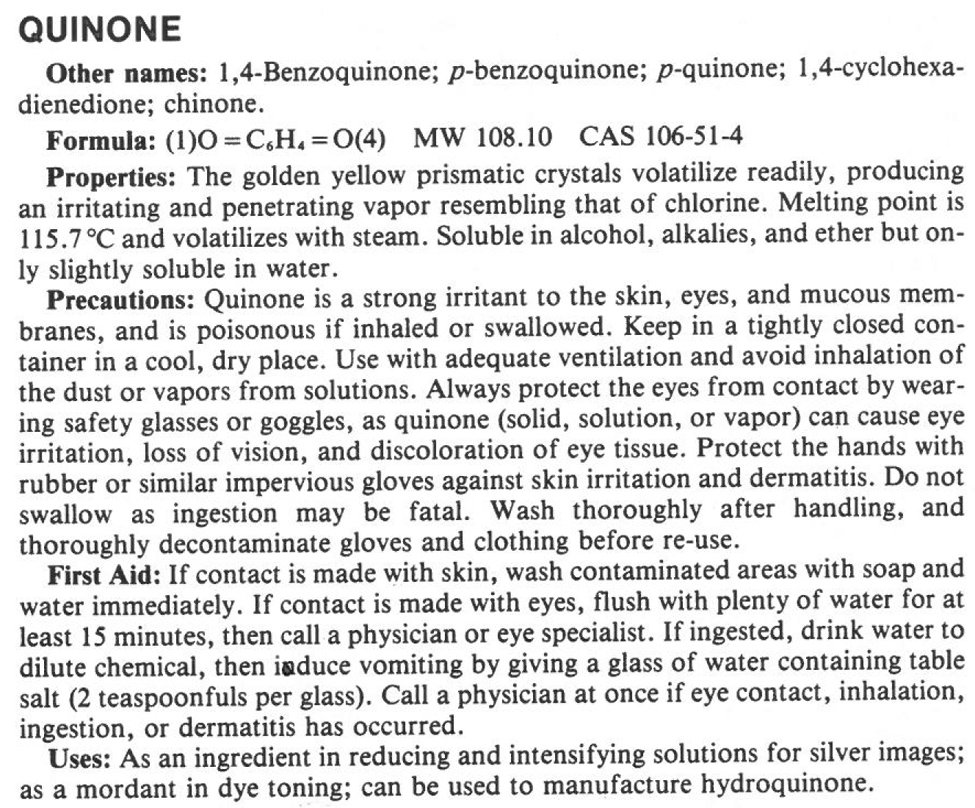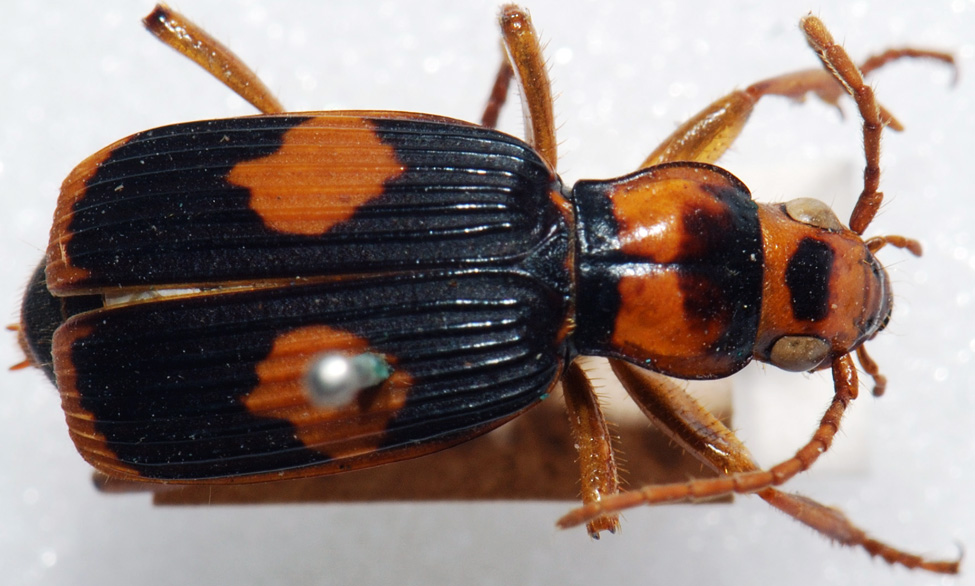
Here is what the Photo-Lab Index from Morgan & Morgan has to say about it:

Charles Darwin discovered this compound in 1846 in a most unusual way as he was collecting specimens.
'Under a piece of bark I found two Carabi (I forget which) and caught one in each hand, when lo and behold I saw a sacred Panagaeus cruxmajor; I could not bear to give up either of my Carabi, and to lose Panagaeus was out of the question, so that in despair I gently seized one of the Carabi between my teeth, when to my unspeakable disgust and pain the little inconsiderate beast squirted his acid down my throat…'

Bombardier beetles are ground beetles which are most notable for the defense mechanism that gives them their name: when disturbed, they eject a hot noxious chemical spray from the tip of the abdomen with a popping sound. They produce hydroquinone and hydrogen peroxide , which are stored in two reservoirs in the beetle's abdomen. When the bug is threatened, it mixes the two in another chamber, which decomposes the hydroquinone into quinone, bringing the mixture near to the boiling point of water, and produces a gas that drives the ejection out it tailpipe, much to Darwin's surprise. The hydroquinone in developers is oxidized into PBQ as it develops the silver halide.
Nick Phillips introduced this organic oxidizing agent to the holographic darkroom in N. J. Phillips, A. A. Ward, R. Cullen, D. Porter, "Advances in Holographic Bleaches," Photographic Science and Engineering 24, 120 (1980), and Agfa-Gevaert adopted it for their recently introduced and improved HD emulsions, as in Agfa Gevaert Technical Information Bulletin 21.7271(480).
Advantages:
The advantage of using this oxidizing agent in rehalogenating bleaches is that it does not disturb the tanned gelatin shell aoround the developed grain as it changes it into AgBr, but it also tans the gelatin in the areas where it is not working , thus preventing emulsion shrinkage.
Disadvantages:
There are not many worse smelling chemicals likely to be found in a darkroom; sodium (meta)bisulfite is the only one close to this one. Best practice is to use another tray floating on top of the PBQ container to contain the fumes. Because it is organic, it does oxidize into uselessness, usually a matter of days before there is no bleaching action, but 10 grams of Potassium Persulfate per liter of bleach will extend the life for months.